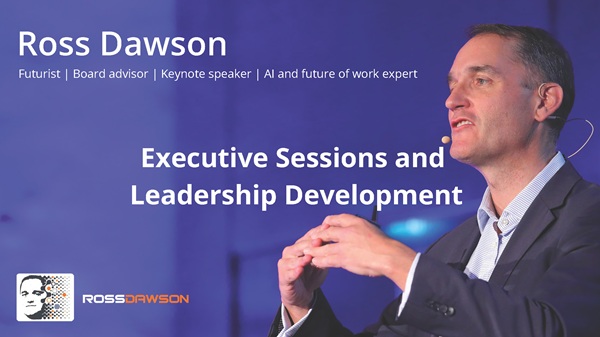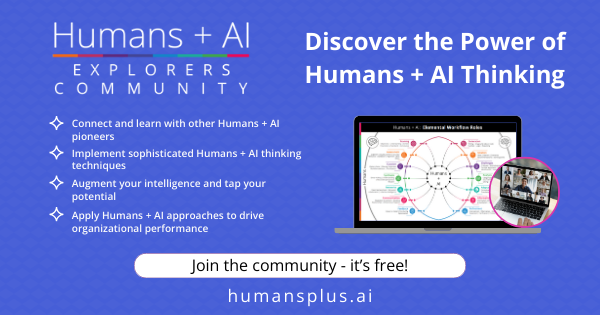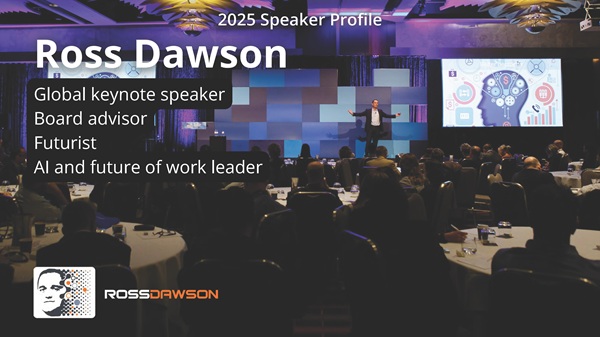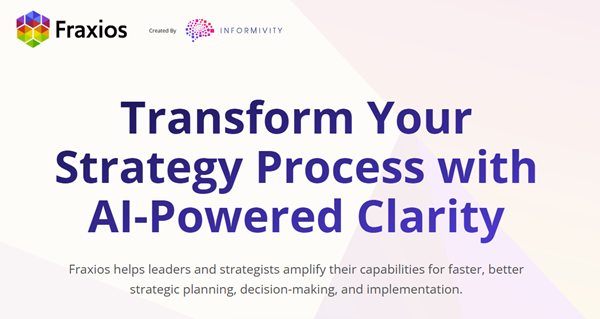In the “AI Agent economy” most market participants will be supported by AI or have AI act on their behalf. Markets and business models will dramatically change and evolutionary “bot battles” will emerge, with the AI on each side adapting in turn to the tactics and strategies of the other.
This diagram shows some of the many domains in which these interactions will develop.
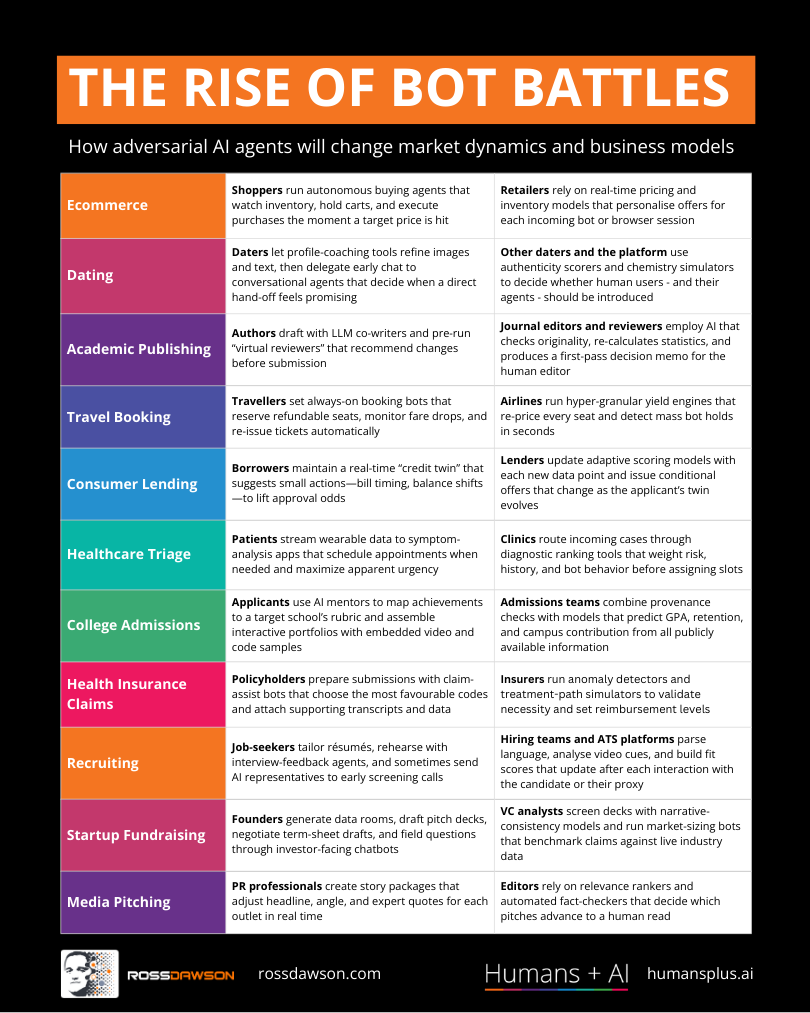
Ecommerce
Shoppers run autonomous buying agents that watch inventory, hold carts, and execute purchases the moment a target price is hit
Retailers rely on real-time pricing and inventory models that personalise offers for each incoming bot or browser session
Dating
Daters let profile-coaching tools refine images and text, then delegate early chat to conversational agents that decide when a direct hand-off feels promising
Other daters and the platform use authenticity scorers and chemistry simulators to decide whether human users – and their agents – should be introduced
Academic Publishing
Authors draft with LLM co-writers and pre-run “virtual reviewers” that recommend changes before submission
Journal editors and reviewers employ AI that checks originality, re-calculates statistics, and produces a first-pass decision memo for the human editor
Travel Booking
Travellers set always-on booking bots that reserve refundable seats, monitor fare drops, and re-issue tickets automatically
Airlines run hyper-granular yield engines that re-price every seat and detect mass bot holds in seconds
Consumer Lending
Borrowers maintain a real-time “credit twin” that suggests small actions—bill timing, balance shifts—to lift approval odds
Lenders update adaptive scoring models with each new data point and issue conditional offers that change as the applicant’s twin evolves
Healthcare Triage
Patients stream wearable data to symptom-analysis apps that schedule appointments when needed and maximize apparent urgency
Clinics route incoming cases through diagnostic ranking tools that weight risk, history, and bot behavior before assigning slots
College Admissions
Applicants use AI mentors to map achievements to a target school’s rubric and assemble interactive portfolios with embedded video and code samples
Admissions teams combine provenance checks with models that predict GPA, retention, and campus contribution from all publicly available information
Health Insurance Claims
Policyholders prepare submissions with claim-assist bots that choose the most favourable codes and attach supporting transcripts and data
Insurers run anomaly detectors and treatment-path simulators to validate necessity and set reimbursement levels
Recruiting
Job-seekers tailor résumés, rehearse with interview-feedback agents, and sometimes send AI representatives to early screening calls
Hiring teams and ATS platforms parse language, analyse video cues, and build fit scores that update after each interaction with the candidate or their proxy
Startup Fundraising
Founders generate data rooms, draft pitch decks, negotiate term-sheet drafts, and field questions through investor-facing chatbots
VC analysts screen decks with narrative-consistency models and run market-sizing bots that benchmark claims against live industry data
Media Pitching
PR professionals create story packages that adjust headline, angle, and expert quotes for each outlet in real time
Editors rely on relevance rankers and automated fact-checkers that decide which pitches advance to a human read
Get in touch
Please get in touch if you’d like to discuss how I can work with your leadership on shifting to Humans + AI structures and business models.

